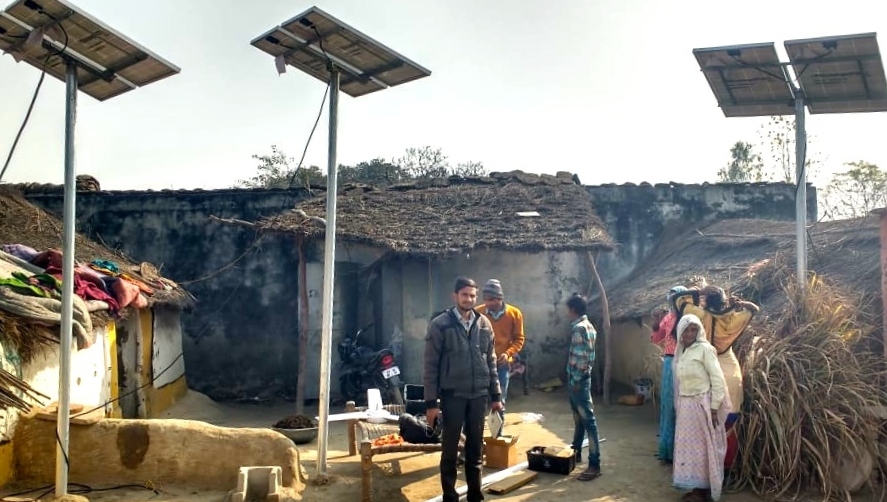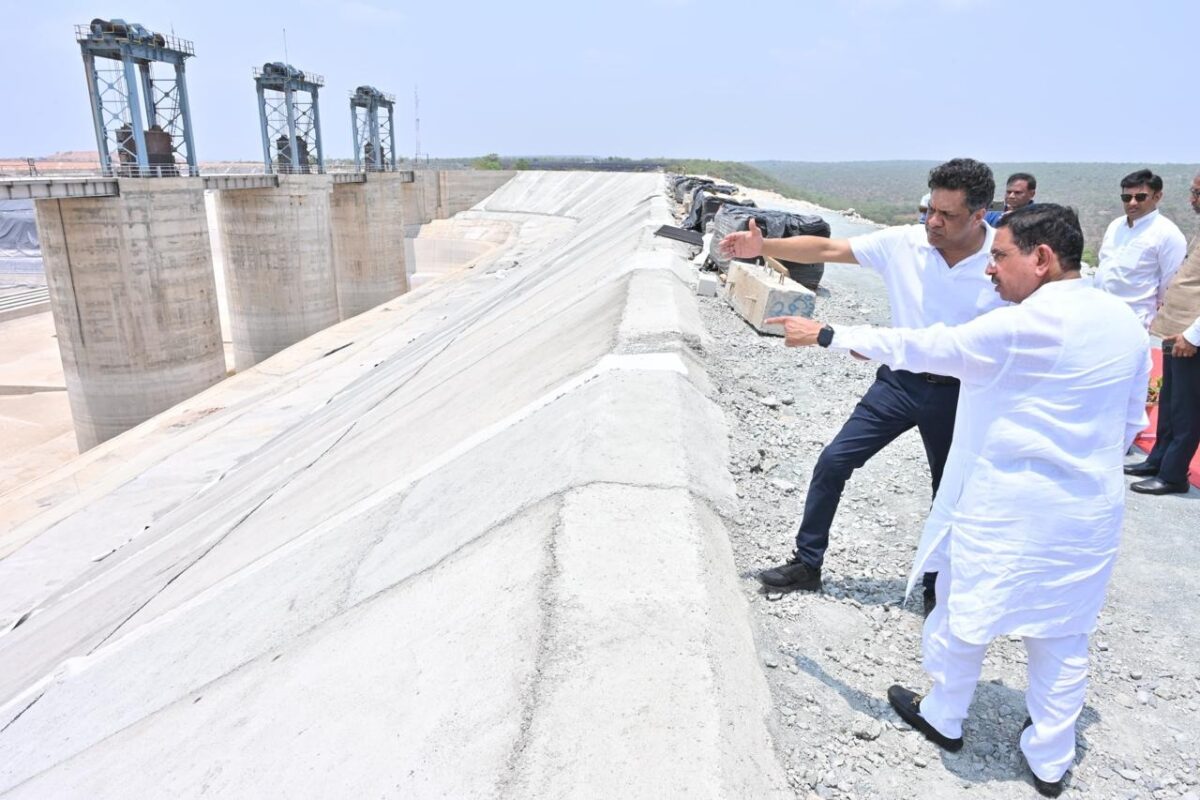For years, a nondescript strip of land in Uttar Pradesh’s Amroha district accepted darkness as its fate. Hemmed in by a river, four villages in Dhanaura block remained one of the last areas in the state without electricity.
For more than 370 families in Daranagar, Tiko Wali, Bhuddiyo Wali and Jahangor Wali, candles and kerosene lanterns were the only means of light. Not many villagers could afford diesel gensets; a few loosened purse strings to buy dry batteries to charge cell phones but women stayed indoors and children closed their books after sunset.
One day, however, that all changed. Villages with no electric poles – and no roads – are now completely lit by solar power. PV panels have been installed at every house as part of the government’s Saubhagya scheme and the villages are now completely dependent on solar power.
“Each house in Daranagar now has two solar panels [and] one battery, which is enough to run five light bulbs and one fan,” Daranagar gram pradhan – head villager – Ismail Khan told pv magazine. “Women feel safer now and children can extend their study hours beyond sunset.”
However, installing solar was not the simplest of tasks. Daranagar has no road connectivity, the only accessible mode of transport is by boat.
A cost-effective solution
Alok Kumar Goel, superintending engineer for the Electricity Distribution Circle of Amroha district, said grid electricity was not feasible because the villages are hemmed in by the river. “Nearly six months ago we sent a requisition to the centre [central government] for providing solar energy to the villages,” he told pv magazine. “Solar panels were later installed by [the] Uttar Pradesh New & Renewable Energy Development Agency [UPNEDA] under the centre’s Saubhagya scheme.”
In India’s largest state, other villages are also joining the the solar revolution. In the tehsil of Amroha, solar is the go-to solution for small everyday needs. “Of the 278 villages that fall under my tehsil, most have adopted solar energy,” said Rajesh Chandra, tehsildar of Amroha. “Anyone who has [a] little money buys a solar panel and uses it to light bulbs and charge phones.”
In April 1983, the government of Uttar Pradesh created the Non-conventional Energy Development Agency, later renamed UPNEDA. Functioning as a nodal agency for the implementation of various schemes in the state, the public body is providing solar street lights, power packs and grant-funded solar pumps under the Dr Ram Manohar Lohia Samagra Gram Vikas Yojana program.
The state government has promulgated its Mini-Grid Policy Uttar Pradesh 2016 program to ensure power supply in rural areas by establishing mini-grid power plants based on new and renewable energy sources in partnership with private developers.
This content is protected by copyright and may not be reused. If you want to cooperate with us and would like to reuse some of our content, please contact: editors@pv-magazine.com.








3 comments
By submitting this form you agree to pv magazine using your data for the purposes of publishing your comment.
Your personal data will only be disclosed or otherwise transmitted to third parties for the purposes of spam filtering or if this is necessary for technical maintenance of the website. Any other transfer to third parties will not take place unless this is justified on the basis of applicable data protection regulations or if pv magazine is legally obliged to do so.
You may revoke this consent at any time with effect for the future, in which case your personal data will be deleted immediately. Otherwise, your data will be deleted if pv magazine has processed your request or the purpose of data storage is fulfilled.
Further information on data privacy can be found in our Data Protection Policy.